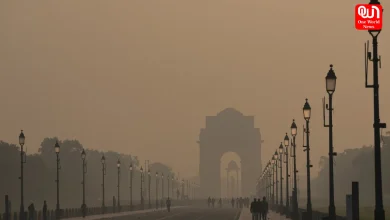Pakistan’s Economic Crisis: Why is the country suffering?

Latest Updates on Pakistan’s Economic Crisis
Pakistan’s Economic Crisis runs deep now. Pakistan saw it coming when the political turmoil started and its PM Imran Khan was dethroned. The crisis has shaken the nation’s very fabric. Let us take a quick look at why it is undergoing the economic mess-
1. Depleting foreign reserves
At the start of the year, the foreign exchange reserves of the country had fallen to $4.3bn, the lowest since 2014.
The past few weeks have seen a rise in the reserves, thanks to Pakistan’s long-time ally, China. China Development Bank has reportedly given a loan of $700 to rescue Pakistan. This has increased their foreign exchange reserves by 20%.
The State Bank of Pakistan tweets-
“Total liquid foreign #reserves held by the country stood at US$ 9.27 billion as of February 24, 2023.”
Total liquid foreign #reserves held by the country stood at US$ 9.27 billion as of February 24, 2023.
For details https://t.co/WpSgomnd3v pic.twitter.com/IjH6eKvVGJ— SBP (@StateBank_Pak) March 2, 2023
This starkly contrasts the reserve amount in February 2022, which was close to US$ 22 billion. A careful reading of the reserves shows that ever since January 2022, the reserves have been depleting slowly on a monthly basis. With depleting reserves and no addition to the foreign exchange, the Pakistan government was very late to act.
2. Rising Inflation
India is currently facing inflation of 6%, and this 6% alone has been so heavy on the pockets of the common man that any further increase would be alarming. In a scenario where 6% inflation is so tricky, Pakistan faces an inflation rate of 31%! This steady rise in the prices of commodities has made it the highest inflation rate in 58 years.
The monthly inflation is measured using CPI (Consumer Price Index). The annual rate of food, beverages, and transport has registered a surge of 45%.
Steve Hank, a professor of Applied Economics at John Hopkins, tweeted about the rising inflation in Pakistan.
On Feb 23, I accurately measured inflation in #Pakistan at 57%/yr, ~2x the official rate of 27.55%/yr. This is why Pakistan takes 14th place in this week's inflation roundup. The Pakistan Bureau of Statistics and Chief Statistician Naeem Zafar are publishing rubbish. pic.twitter.com/KzVx6nEJwx
— Steve Hanke (@steve_hanke) February 28, 2023
Unchecked inflation is always detrimental to the economy of a nation. If this continues in Pakistan, the country will bleed even more.
3. Free fall of Pakistani Rupees
Pakistani rupees have hit an all-time low as the country fails to see the light at the end of the tunnel. With low levels of 284 per US dollar on Thursday, the Pakistani Rupees have been tumbling down for the past few months.
These economic conditions have also led Moody, a leading credit rating agency, to downgrade its debt rating of Pakistan to ‘Caa3’ from ‘Caa1’. The downgrade was driven by “increasingly fragile liquidity” and “external position significantly raises default risks to a level consistent with a Caa3 rating.”
The report by Moody emphasised on how the low foreign exchange reserves will fail to cover the import needs of the nation. The debt obligation of Pakistan is also not very bright. Even with help from the IMF, the “weak governance and heightened social risks” put the country in a difficult position.
A rating of ‘Caa3’ shows that obligations may not be met and there is a very high credit risk.
Was the economic crisis bound to happen?
The political situation has not been stable in Pakistan. With Imran Khan being ousted after a no-confidence motion in 2022 and the new PM Shehbaz Sharif coming into power, the instability is also a major reason for the current situation.
In the past 5 years alone (since 2018), Pakistan has seen a change of seven finance ministers. The latest FM Ishaq Dar has also been blamed for the current situation.
At a time when oil prices were increasing around the world, the Pakistani government led by Prime Minister Imran Khan had decided to reduce the prices in order to appeal to the voters.
In 2022, the floods in Pakistan also added to its woes as the country lost a lot in crops and livelihood.
The remittances sent by Pakistanis who are living overseas also saw a decrease of 9.9% in January. Remittances are usually a saving grace for a country, but such low levels of remittances have caused a further dent in the economy.
The IMF Support
In this situation of economic crisis, Pakistan has reached the doors of the IMF (International Monetary Fund) to bail them out. In the past 75 years, Pakistan has gone to the IMF 23 times in order to seek its help. The cash-strapped nation’s inability to set things right is also what has irked the IMF and has led them to set some ground rules this time before they hand them any money.
IMF and Pakistan are stuck in the middle as Pakistan continues to honour the demands of the IMF to unlock the USD 1.1 billion package. Recently, the interest rates were also hiked to 20% in hopes of unlocking the help from IMF. With a 20% interest rate, Pakistan now has the highest interest rate in Asia.
Read more: – Recession 2023: Top Nations in the Plague of Economic Crisis, Where India Stands in this Mess?
Delayed support from IMF has pushed the country even further into economic turmoil. With no support from the international organisation, there is little that can be said about the future of Pakistan.
How will this impact India?
Being a neighbouring country, the impact of this crisis is bound to reach India in some way or the other. The biggest fear is the huge influx of refugees that can be expected. Political and economic turmoil is the number one reason for people to leave their country. If such issues continue in Pakistan, India will have its hands full in dealing with a refugee crisis.
Bilateral trade between the two nations was around USD 1.35 billion from April-December 2022. This was a huge jump from 2021. This bilateral trade will also be impacted due to this crisis.
The massive help that has been given to Pakistan by China also shows the closeness of the two nations. India needs to accept that the China-Pakistan bond is stronger than it anticipated. This friendship will be heavy on India as it means that China will indirectly support anti-India activities in Pakistan. Strategic planning and the use of soft power will be needed to deal with this.
The impact of economic crisis will impact the global scenario as well. Until and unless the country starts taking some serious amends, there is no saying what will happen. All we can do is wait and see how this crisis unfolds.







